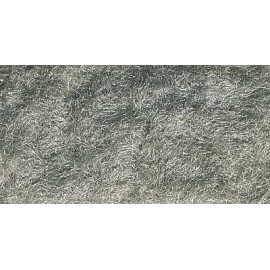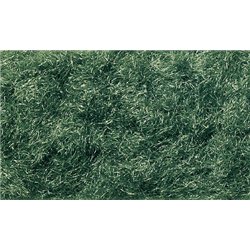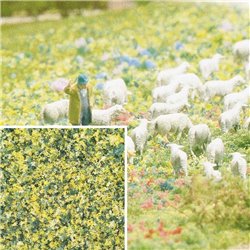A number of model manufacturers produce materials to help modellers scratch-build scene elements to add further...
No products
Product successfully added to your shopping cart
There are 0 items in your cart. There is 1 item in your cart.
Search Tips
Christmas and New Year
Due to public holidays, orders will be next dispatched on Monday 29th.
If you select next day delivery at checkout, please note deliveries are not made on New Year's Day or Sundays.
The shop in Sandown is closed on Saturday 27th December and will reopen on Tuesday 30th December.
Tuesday 30th: 10am to 4.30pm - Wednesday 31st: 10am to 2.30pm - Thursday 1st: closed - Friday onwards: 10am to 4.30pm.
What is flock as used for scale modelling?
In scale modelling, "flock" refers to finely ground fibres or particles used to simulate textures such as grass, foliage or other surfaces in miniature landscapes and dioramas. This material is essential for creating realistic and immersive environments in various types of models, including railway layouts, architectural models and wargaming terrains. By using flock, you can add a significant level of detail and authenticity to their projects, making scenes come to life in a visually compelling way. The versatility and ease of use make flock a popular choice among hobbyists and professionals alike.
Flock is available in a wide range of colours and textures, enabling you to achieve different effects and levels of detail. For instance, green flock can be used to mimic grass, while brown or autumnal shades can represent dead leaves or soil. There are also options for more specialised applications, such as snow, sand or even alien landscapes. The variety allows for precise customisation of the model's environment, ensuring that every scene can be as unique and accurate as the modeller desires. The choice of flock can greatly influence the overall aesthetic and realism of the finished project.
The application of flock is relatively straightforward, making it accessible to modellers of all skill levels. Typically, a layer of adhesive is applied to the area where the flock is desired. The flock is then sprinkled or spread over the adhesive, where it sticks and creates the desired texture. Some modellers use specialised applicators to achieve more uniform coverage or to create specific effects, such as applying static grass, which stands upright to more realistically mimic the appearance of real grass. Once the adhesive dries, any excess flock can be gently brushed away, leaving a textured, lifelike surface.
Flock can also be used in combination with other materials to enhance the visual realism of a model. For example, it can be layered over foam or mixed with other textures like static grass to create varied and complex terrains. This layering technique is particularly useful for creating natural-looking landscapes with depth and dimension. Additionally, different grades of flock, from fine to coarse, can be used to represent various types of ground cover and vegetation. By experimenting with different combinations and techniques, you can achieve highly detailed and realistic results, making their miniature worlds truly captivating.
Click here to receive the tips weekly in your mailbox. You can unsubscribe at any time.










